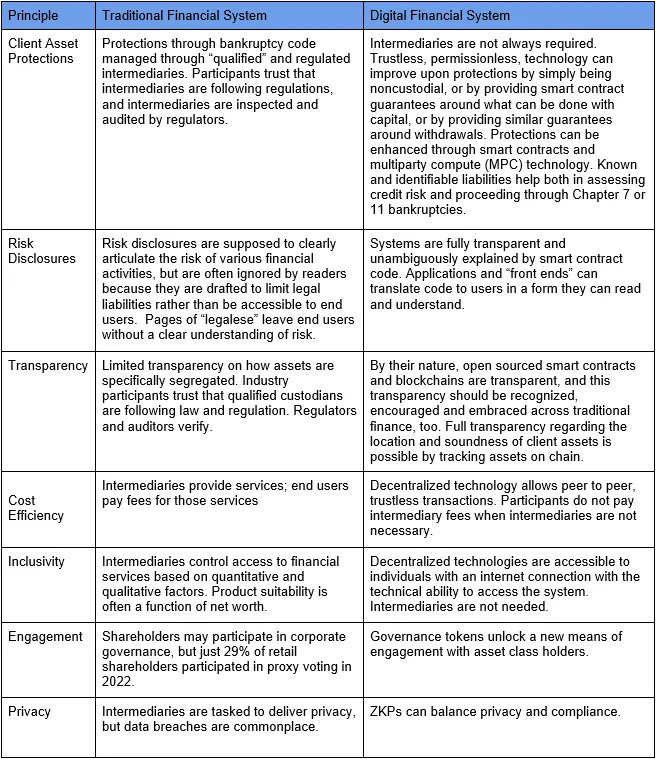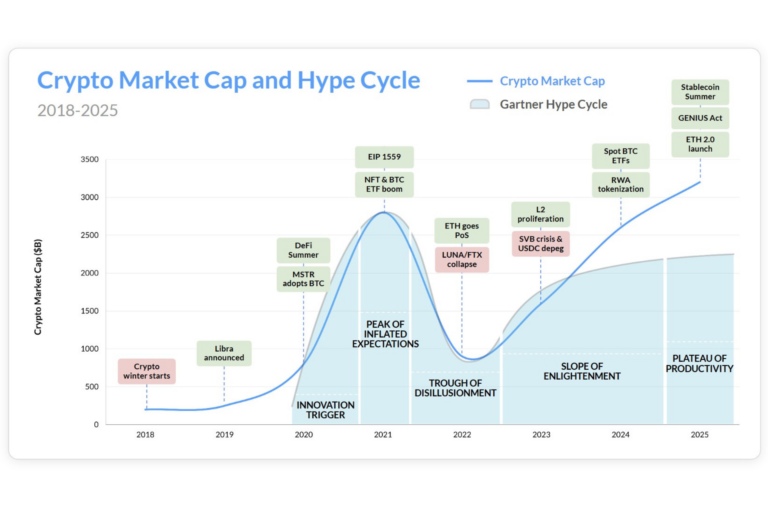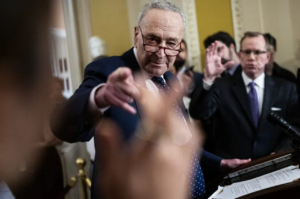
CoinFund Regulatory Principles
Better Technology, Better System: Ten Policy Suggestions for the Digital Financial System
When it comes to regulating the cryptocurrency industry, the adage “same activity, same risk, same rules” has emerged as a rallying cry within regulatory circles. While this approach may make sense on the surface, in any regulated financial system, it is the principles that must be identical. Recent advances in decentralization technology can, in many cases, more effectively manage these risks and deliver on the principles needed to cultivate fair, efficient and secure markets. In fact, blockchain technology actually mitigates and retires a number of legacy risks, thus requiring a rethink of the market structure and elements of legacy regulation that now can be rendered moot. Instead of approaching this new horizon with the band-aid of decades-old rules limited by obsolete technology, regulators should encourage the adoption of new technologies that can better deliver on core principles. Armed with the capabilities that blockchain technology can offer, the time has come to build a better financial system.
Perhaps due to legacy technology limitations, traditional market structure depends on intermediaries to deliver products and services to end users, and regulatory policies and infrastructure largely focus on the behavior of these intermediaries. While intermediaries and centralized players are expected to continue to play a role across markets, blockchain technology now offers a decentralized alternative that can meet, and in some cases, more effectively deliver on these same core principles. As this new digital financial system takes shape, here are ten suggestions that should be considered by policymakers:
1. Legislation must form the foundation of digital financial policy. Statute should empower and task regulators to put forth principles-based regulation that would drive certainty for entrepreneurs and unlock responsible innovation. Effective legislation should eliminate jurisdictional ambiguity among regulators and create conditions for innovation to thrive. It must be prioritized.
2. Regulation should be principles-based. Legacy regulation should evolve with advances in technology to more effectively deliver on the same fundamental core principles. These core principles include:
- Client asset protections. Smart contracts, multiparty compute (MPC) technology and the inherent transparency of blockchain can improve client asset protections. Law and regulation should recognize the protections that they deliver, since in many cases they can provide even more robust and transparent protections than centralized, legacy “qualified” custodians.
- Transparency. Policy should encourage minimum standards of asset transparency, so that users have visibility over the safety and security of their property once service providers assume custody and control. Fraud is more difficult in transparent systems, and the transparency delivered by blockchain technology provides new ways to combat it. For example, blockchain technology can enable verifiable proof of reserves.
- Client Disclosures. Building upon the transparency theme, centralized organizations that provide crypto and/or traditional financial services should provide users with clear, accurate, comprehensive, and understandable disclosures of the risks associated with various activities they are offering. While open source code by its nature provides disclosures to those with technical expertise, for profit, centralized “front ends” should provide disclosures to their customers that are sufficiently succinct and written in “plain English” to explain the underlying risk of the activity.
- Cost efficiency. By mandating intermediaries at a time when decentralization technologies can deliver on the same core market principles without the added fee taking and expense, regulations should take care to avoid introducing unnecessary, incremental costs for end users. A system with fewer intermediaries, powered by blockchain technology, promises to be more cost effective and inclusive since an additional layer of fees are eliminated — undoubtedly in the consumer’s best interest. For example, a recent whitepaper by Uniswap and Circle suggests that on-chain remittances can reduce costs by 80%.
- Inclusivity. Markets should be intentionally designed to be inclusive, not exclusionary, and they should allow any person, regardless of socioeconomic demographic, to have fair access to financial products and services. Direct access to financial products and services, without mandated intermediaries, can empower underserved segments of our society. While legacy regulation relies on things such as net worth as an analogue for financial sophistication to help determine suitability and access to financial products, a better way is to allow individuals with the technical know-how and financial understanding to access these products themselves. In the current system, intermediaries rely on subjective inputs, and sadly, studies continue to show that race and other discriminatory factors continue to drive those inputs. In web3, computer code does not discriminate.
- Engagement. Systems that democratize governance and enable broad-based engagement in the financial system should be encouraged by statute and policy, not restricted or threatened by regulatory risk or legal liability. Governance tokens provide an exciting new means of grassroots engagement and potentially offer a major improvement over analogue proxy voting mechanisms of legacy markets.
- Privacy. Economic activity will flourish if privacy is respected and not viewed as a threat. In today’s internet, the user is the product and centralized oligopolies monopolize data. In web3, the user is the beneficiary. While blockchain technology is transparent by its nature, zero-knowledge proofs (ZKPs) can unlock new opportunities for privacy while simultaneously enabling compliance with anti-money laundering (AML), know your customer (KYC) and other related laws and regulations. Policy makers in Europe are already moving forward with such an approach and the U.S. Department of Treasury recently recognized the promise ZKPs in their 2023 DeFi Illicit Risk Assessment.
3. Regulations must be clear, consistent and predictable, and processes for compliance should be straightforward and seamless. The vague and complex status quo leaves entrepreneurs in a difficult position. At a time when regulation does not neatly reconcile with technology and compliance processes are not clear, young companies must seek extensive (and expensive) legal advice in their quest for compliance. More often than not, this advice fails to deliver certainty — leaving companies without iron-clad protection from regulatory action. Sadly, regulatory ambiguity diverts precious funding, consumes valuable time and stifles innovation. Across markets, the preponderance of market participants, founders and entrepreneurs are keen to comply. Legacy and opaque case law should be clarified by clear, obvious and perhaps empirical measures that determine regulatory jurisdiction and should be informed by statute. Moreover, pertinent registration processes must be easy to understand and follow, and recognize the nuance of decentralization technologies by closing existing gaps in existing disclosure and registration forms.
4. Centralized intermediaries should be regulated, but decentralized technologies should not. Like the internet, decentralized technologies will persist and are technologies without executives or a specific geography — accessible for global use. However, centralized for profit entities that engage in financial activities should be regulated in accordance with the principles specified above. Blockchain technology provides an opportunity to move away from entity based regulation to activity based regulation providing greater effectiveness and less monopolistic behavior at lower cost.
5. Regulation should encourage and incentivize the adoption of the best technology to deliver on core principles. Blockchain technology allows near instantaneous real time global transaction settlement, thus potentially eliminating Herstatt and other risks. To the extent that new technologies can better deliver on core principles, the traditional financial system should embrace them as well. Decentralized technologies are here to stay; they provide opportunities to create a better system across traditional markets, too.
6. Legislation and regulatory policy should recognize that the resiliency and inclusivity of public blockchains deliver material improvement over closed private blockchain systems. Private blockchains are exclusionary by their nature, and a greater number of diverse validators tend to make public blockchains more resilient and more resistant to attack and manipulation. Additionally, open source protocols tend not to result in exclusionary systems between “haves” and “have nots”; they better align with the principle of inclusivity.
7. Sandboxes and safe harbor programs and engagement should be encouraged and prioritized. SEC Commissioner Peirce’s proposals are a great place to start. Experimentation, exploration and at times, failure are important components of innovation. Entrepreneurs should be encouraged to innovate thoughtfully without fear of regulatory reprisal.
8. Rulemaking must include reasonable public comment periods (e.g. 90 days), thoughtful community dialogue via public engagement and robust cost benefit analysis. Legislation should guide regulatory rulemaking, and in order to achieve principles-based regulatory outcomes, due process must be rigorously followed. Rulemaking by regulators requires education, academic study and collaboration with subject matter experts from industry, government and academia. Thoughtful and diligent processes tend to help alleviate the unintended consequences of poor rulemaking.
9. Fraud, manipulation and abuse must never be tolerated, should be rigorously rooted out and its perpetrators held accountable. Nefarious activities are certainly not unique to digital financial markets and regulators should continue to be fully empowered to enforce existing regulations where appropriate. Due to their inherent transparency, smart contracts can continue to play an important role in minimizing fraud in financial transactions and aiding law enforcement in the future.
10. Across the globe, passporting, substitute compliance and third country recognition should be embraced and prioritized. Globally, regulation is expected to be consistent but not identical. The internet is global and so is commerce. Web3 is no different. Governments around the world should prioritize third party recognition of regimes that are consistent but not necessarily identical through a reasonable passporting or “substituted compliance” programs. This will again alleviate the costly legal burden of registration for entrepreneurs while continuing to ensure principles remain intact for global markets.
In sum, blockchain technology holds great potential to help build a better, more efficient and more inclusive financial system, and unlock a new era of responsible financial prosperity and job creation. Jurisdictions that embrace a principles-based approach to new legislation and regulation stand to benefit, while those that do not will clearly be left behind.
Appendix 1: Differences between traditional and digital financial systems

***
SOURCES:
Disclaimer: The views expressed here are those of the individual CoinFund Management LLC (“CoinFund”) personnel quoted and are not the views of CoinFund or its affiliates. Certain information contained herein has been obtained from third-party sources, which may include portfolio companies of funds managed by CoinFund. While taken from sources believed to be reliable, CoinFund has not independently verified such information and makes no representations about the enduring accuracy of the information or its appropriateness for a given situation.
This content is provided for informational purposes only, and should not be relied upon as legal, business, investment, or tax advice. You should consult your own advisers as to those matters. References to any securities or digital assets are for illustrative purposes only, and do not constitute an investment recommendation or offer to provide investment advisory services. Furthermore, this content is not directed at nor intended for use by any investors or prospective investors, and may not under any circumstances be relied upon when making a decision to invest in any fund managed by CoinFund. An offer to invest in a CoinFund fund will be made only by the private placement memorandum, subscription agreement, and other relevant documentation of any such fund and should be read in their entirety. Any investments or portfolio companies mentioned, referred to, or described are not representative of all investments in vehicles managed by CoinFund, and there can be no assurance that the investments will be profitable or that other investments made in the future will have similar characteristics or results. A list of investments made by funds managed by CoinFund (excluding investments for which the issuer has not provided permission for CoinFund to disclose publicly as well as unannounced investments in publicly traded digital assets) is available at https://www.coinfund.io/portfolio.
Charts and graphs provided within are for informational purposes solely and should not be relied upon when making any investment decision. Past performance is not indicative of future results. The content speaks only as of the date indicated. Any projections, estimates, forecasts, targets, prospects, and/or opinions expressed in these materials are subject to change without notice and may differ or be contrary to opinions expressed by others. This presentation contains “forward-looking statements,” which can be identified by the use of forward-looking terminology such as “may”, “will”, “should”, “expect”, “anticipate”, “project”, “estimate”, “intend”, “continue” or “believe” or the negatives thereof or other variations thereon or comparable terminology. Due to various risks and uncertainties, actual events or results may differ materially and adversely from those reflected or contemplated in the forward-looking statements.

Chris Perkins serves as Managing Partner and President of CoinFund, driving day-to-day excellence and enterprise scale by bridging the gap between cryptocurrency native investing and traditional finance.
He also advocates for the interests of the crypto ecosystem through his appointment to the CFTC’s Global Markets Advisory Committee and its Digital Asset Markets Subcommittee. He has also testified before Congress on crypto market structure design.
Chris is the co-inventor of the Composite Ether Staking Rate (CESR), which is the first interest rate benchmark of its kind in the crypto industry.
Prior to joining CoinFund, Chris served as Global Co-Head of Futures, Clearing and Foreign Exchange Prime Brokerage (FXPB) businesses at Citi. In this capacity, he was responsible for delivering leading listed derivative electronic and voice execution, comprehensive central clearing and #1 ranked OTC Clearing and FXPB services to top institutional clients.
Prior to joining Citi in 2008, Chris served as the U.S. Head of Derivatives Intermediation at Lehman Brothers. An Iraq war veteran, Chris served in the U.S. Marine Corps for nine years achieving the rank of Captain. Chris is the co-founder of Veterans in Digital Assets (VIDA) and Veterans on Wall Street (VOWS) (www.veteransonwallstreet.com), two international initiatives focused on veterans’ employment and empowerment. He has a Bachelor of Science degree from the U.S. Naval Academy, with distinction, and a Master of Arts degree in National Security Studies from Georgetown University. He is a member of the Economic Club of New York.









